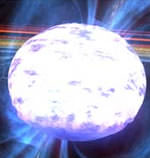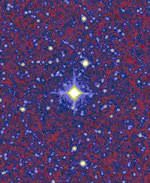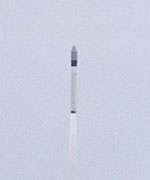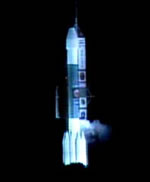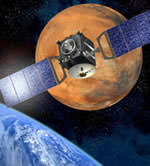
Image credit: ESA
Operators with the European Space Agency are currently testing various systems on the Mars Express spacecraft, and it looks like there’s a bit of a problem. It seems that there’s a connection problem between the spacecraft’s solar panels and its power conditioning system. If they can’t fix this problem, the spacecraft will only be able to operate at 70% power; however, it will still be able to perform nearly all of its objectives for the mission. Ground engineers will begin tests on the Beagle 2 lander on July 4.
ESA?s Mars Express spacecraft is progressing further every day on its journey to the Red Planet. Everything is set for arrival at Mars on the night of 25 December 2003, after a journey of about 400 million kilometres. In the weeks since its launch, engineers have started to thoroughly test the spacecraft and its equipment.
This testing phase is standard for all spacecraft on the way to their destination. Known as commissioning, it began 3 weeks after the launch. During this time, ground controllers sent signals to each of the orbiter’s seven instruments to switch them on and verify their health status.
As well as commissioning the instruments, the ground controllers also tested each of the spacecraft?s subsystems. There was a thrilling moment when one of the on-board computer memory units, known as the Solid State Mass Memory (SSMM), seemed to not respond properly during the instruments check-out. Good progress has been made on this issue in the last few days: a test involving all instruments was completed successfully by recording and recovering the data through the SSMM.
Unfortunately, during the commissioning of the power subsystem, ground engineers recorded an interconnection problem between the solar arrays and the power conditioning unit on board the spacecraft. This means approximately 70% of the power generated by the solar arrays is available for the satellite and its payload to use. This anomaly has no effect on the state of the spacecraft and has no impact on the mission during the whole trip to Mars, including the orbit insertion phase once at destination.
Despite this, the experts analysing the anomaly believe that even with this power shortage, the nominal Mars observation mission will be achievable. However, satellite payload operations may have to be reviewed for certain short periods of the mission.
Ground engineers are now preparing for the last of the payload?s tests: the Beagle-2 lander will undergo its check-out on 4-5 July 2003. The experts are looking confidently to it. “In fact,” says Rudolf Schmidt, Mars Express Project Manager, “overall, the spacecraft is in good shape. We are simply getting to know its personality.”
Original Source: ESA News Release



